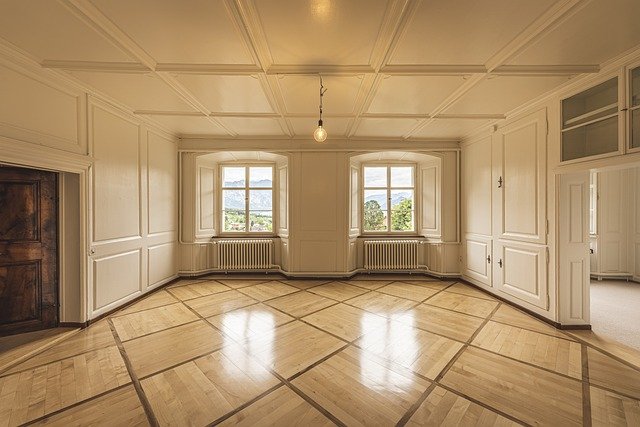Illuminating Spaces: The Art of Architectural Light Shelves
In the realm of innovative home design, a quiet revolution is taking place above our heads. Architectural light shelves, once confined to commercial spaces, are now making their way into residential interiors, transforming how we experience natural light and energy efficiency in our homes. This clever design element is not just about illumination; it's a sophisticated blend of form and function that's reshaping our living spaces.

The Genesis of Light Shelves
Light shelves trace their origins to ancient civilizations, where rudimentary overhangs were used to control sunlight in hot climates. However, it wasn’t until the mid-20th century that architects began to refine this concept for modern buildings. Pioneering designers like Le Corbusier experimented with brise-soleil, external shading devices that evolved into the sophisticated light shelves we see today.
Initially, light shelves were primarily used in office buildings and schools to reduce energy costs and improve lighting conditions. The transition to residential spaces has been gradual but significant, driven by a growing awareness of energy efficiency and the desire for more natural light in homes.
Anatomy of a Light Shelf
At its core, a light shelf is a horizontal projection installed above eye-level, typically on the interior or exterior of windows. The upper surface is designed with highly reflective materials to bounce sunlight onto the ceiling and deeper into the room. This simple yet ingenious design redistributes daylight, reducing glare near windows and illuminating areas that would otherwise remain dim.
Modern light shelves come in various materials, from sleek aluminum to warm wood finishes, allowing them to complement any interior style. Some advanced designs incorporate adjustable angles or automated systems that track the sun’s movement, optimizing light distribution throughout the day.
The Science of Daylighting
The effectiveness of light shelves is rooted in the principles of daylighting, the practice of using natural light to illuminate interiors. By reflecting sunlight upwards, light shelves create an indirect lighting effect that mimics the soft, diffused quality of overcast sky light. This not only enhances visual comfort but also reduces the need for artificial lighting, leading to significant energy savings.
Studies have shown that well-designed daylighting strategies can reduce lighting energy use by up to 80%. Moreover, exposure to natural light has been linked to improved mood, productivity, and overall well-being, making light shelves a valuable addition to home offices and living spaces alike.
Integrating Light Shelves in Home Design
Incorporating light shelves into residential architecture requires thoughtful planning and design. Factors such as window orientation, room depth, and ceiling height all play crucial roles in determining the optimal configuration. South-facing windows in the Northern Hemisphere (and north-facing in the Southern) are ideal candidates for light shelves, as they receive the most direct sunlight throughout the year.
Architects and interior designers are finding creative ways to seamlessly blend light shelves into home aesthetics. In minimalist interiors, sleek, barely-there shelves create a clean, unobtrusive look. For more eclectic spaces, decorative light shelves double as display areas for plants or artwork, adding visual interest while performing their light-bouncing duties.
Beyond Illumination: The Multifaceted Benefits
The advantages of light shelves extend far beyond improved lighting. By reducing direct sunlight penetration, they help regulate indoor temperatures, potentially lowering cooling costs during summer months. This passive solar design element can be particularly effective in regions with intense sunlight, creating more comfortable living environments without relying heavily on air conditioning.
Furthermore, light shelves contribute to a home’s overall sustainability profile. By maximizing natural light utilization, they reduce the carbon footprint associated with artificial lighting. For eco-conscious homeowners, this aligns perfectly with goals of creating more environmentally friendly living spaces.
The Future of Home Illumination
As we look to the future of residential design, light shelves are poised to play an increasingly important role. Advancements in materials science are leading to more efficient reflective surfaces, while smart home technology is enabling dynamic light shelf systems that adapt to changing light conditions and user preferences.
The integration of light shelves with other sustainable design elements, such as solar panels and energy-efficient windows, promises to create homes that are not just well-lit, but truly responsive to their environment. As urban density increases and natural light becomes a premium commodity, the clever manipulation of daylight through architectural features like light shelves will become ever more crucial.
In conclusion, architectural light shelves represent a fascinating intersection of ancient wisdom and modern innovation. By harnessing the power of natural light in new and sophisticated ways, they offer a glimpse into a future where our homes work in harmony with the environment, creating spaces that are not just beautiful and comfortable, but also sustainable and health-promoting. As we continue to reimagine our living spaces, the humble light shelf stands as a shining example of how thoughtful design can illuminate our lives in more ways than one.





